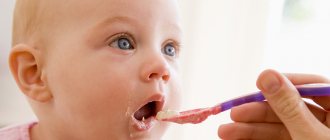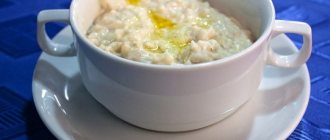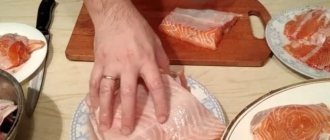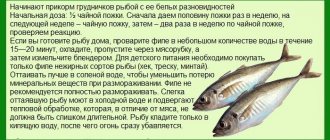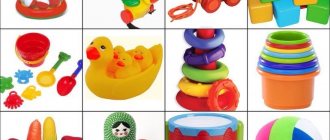On holidays, when the family gets together, there is a great temptation to feed the baby, who is just getting acquainted with “adult” food, from the common table. What can you give a child from 1 to 3 years old from the holiday menu, and what foods and dishes are not yet suitable for him? What should you avoid in the diet of children and after 3 years? Tips for moms.
Dishes for children after 1 year
Dishes for one-year-old children should be tender in consistency, but with small pieces on which the baby can practice his chewing skills. Among the many culinary techniques, choose the gentlest ones so as not to put too much strain on your little one’s digestion: boil, stew, bake or steam.
By the age of one year, babies have time to get acquainted with the main varieties of meat and lean fish, but if earlier you offered them only in the form of purees, now also in cutlets (steamed, not fried), meatballs, and baked dishes. As in any full meal, they will be complemented by a side dish: at this age, the baby will already be able to appreciate pasta, cereals (buckwheat, rice), and, of course, all kinds of fresh vegetables (grated on a fine and later coarse grater) , boiled, stewed, steamed.
For dessert, offer your sweetheart “vitamin” porridge with pieces of vegetables, fruits or dried fruits, cottage cheese casserole or semolina pudding.
Nutrition for a child from 6 to 12 months
What to feed a child up to one year old? List of recommended products for a one-year-old baby
By and large, it does not matter to the baby what kind of solid food will be offered to him first. And there is no evidence that you need to start complementary feeding with any specific product. However, most parents prefer to feed their children grains, offering each option in turn:
- cereals;
- rice;
- Wheat groats;
- semolina;
- couscous;
- amaranth;
- quinoa.
In addition, it does not matter what to give your child first: vegetables or fruits. Although some pediatricians may recommend starting solids with vegetables, there is no scientific evidence that your baby will develop an aversion to vegetables if given sweet fruits first. The thing is that newborns are born with a preference for sweets (breast milk) and the order in which the products are introduced will not change this.
The only thing that experts from the American Academy of Pediatrics pay attention to is meat. If your baby's diet consists of breast milk, he may benefit from pureed meats as his first food, as they contain more easily digestible sources of iron and zinc, which are essential up to 6 months of age.
In any case, before introducing solid foods into your child’s diet, consult your pediatrician; he will tell you in more detail about acceptable foods, and also guide you on the acceptable amount of complementary foods per day.
Is it possible to include highly allergenic foods in the menu of a child under one year old?
Previously, pediatricians insisted that highly allergenic foods should absolutely not be eaten by children under one year of age. However, new research has shown that such abstinence does not help prevent food allergies. Abstinence often leads to an increased risk of allergic reactions.
To determine if a child is allergic to food, introduce each product into his diet separately. Then wait 3-5 days to note the child’s body’s reaction. However, if you suffer from allergies or your baby has eczema, consult a doctor. Let your pediatrician help you choose a safe strategy for introducing allergenic foods into the menu of your child under one year old. Their list includes:
- peanut;
- hazelnuts;
- milk;
- sea reptiles;
- millet porridge;
- fish;
- soy;
- eggs.
When can a child be given finger food?
Once your baby can sit in a high chair and bring food to his mouth, you can try giving him something called finger food. However, to prevent choking, make sure any foods you offer your baby are soft, easy to swallow, and cut into small pieces.
List of products up to a year old that can be used as “finger” food:
- banana;
- wafer cookies;
- crackers;
- scrambled eggs;
- well cooked pasta;
- well-cooked and very finely chopped chicken;
- potato;
- peas.
Sample menu for a child up to one year old
When your baby starts eating solids, planning his diet can be a challenge. Remember that until one year of age, your baby should receive 750-900 kcal per day, 400-500 of which should come from breast milk or formula.
To make it easier for you, we have compiled an approximate daily diet that will help you understand the general principles of feeding and what foods should be present in your baby’s daily menu.
Breakfast
- ½ cup (120 g) porridge or puree
- ½ cup (120 g) fruit, cut into small pieces if your baby is already eating on his own, or pureed if he has not yet learned to eat finger foods
- 120-180 ml breast milk or formula
Snack
- 120-180 ml breast milk or formula
- diced cheese or well-cooked vegetables
Dinner
- ½ cup (120 g) yogurt, cottage cheese, meat
- ½ cup (120 g) yellow or orange vegetables
- 120-180 ml breast milk or formula
Snack
- wafer cookies or crackers
- ¼ cup (60 ml) yogurt or diced fruit if baby is feeding himself
Dinner
- 60g diced or pureed poultry, meat or tofu
- ½ cup (120 g) green vegetables
- 60 g noodles, pasta, rice or potatoes
- ¼ cup (60 g) fruit
- 120-180 ml breast milk or formula
Before bedtime
- 180-240 ml breast milk or formula
What should children from 6 months to 1 year not eat?
Children under one year old do not know how to chew and are not able to grind food due to lack of teeth. Therefore, you should carefully choose food products and know exactly what to feed a child up to one year old, and what is contraindicated. Below is a list of what children should not eat:
- Foods cut into large slices
can get stuck in a child's throat and cause choking. Pediatricians recommend giving children over six months of age food no larger than 1 cm. - Food prepared for adults.
It may contain large amounts of salt and other preservatives. - Raw vegetables.
- Nuts and seeds.
You can give your baby watermelon, peach, plum or cherry, but be sure to remove the seeds and pits before serving. Remove nuts and seeds from the list of products for children - sunflower or pumpkin. The seeds are unlikely to cause suffocation, but they can get stuck in the respiratory tract and cause an infection. - Hard and crunchy foods
. Nuts, popcorn and saltine crackers pose a high choking hazard. This list should include hard candies and cough drops. - Sticky products.
Chewing gum, jellies, candy, dried fruit and marshmallows can get stuck in a child's throat. The same thing can happen with melted cheese. Because the baby cannot cough and clear food from the throat on his own, sticky food can cause choking. - Peanut butter
. Peanut and other nut butters have a sticky consistency and are difficult for your baby to swallow. - Honey.
It is often a source of spores of the bacteria Clostridium botulinum, the causative agent of botulism. The adult body is able to prevent the growth and spread of these spores. In children's intestines, Clostridium botulinum can actively multiply and produce life-threatening toxins. - Cow's or any other milk
(except breast milk). During the first year of life, a child's digestive system will not be able to cope with the protein in cow's milk and soy milk. Also, cow's and plant milk contain too high a concentration of minerals that can harm the kidneys. - Fruit juice.
The American Academy of Pediatrics recommends that fruit juices not be given to infants under 1 year of age because they provide no benefit and can lead to obesity, tooth decay, and malnutrition.
Menu for a child 1.5-2 years old
As children approach two years of age, they gradually become familiar with dishes familiar to all adults. Now purees and airy soufflés can be made more rare guests on the baby’s table, and meat, vegetables and fruits can be cut larger. At the same time, we should not forget that the child’s body is not yet ready to accept everything that appears on the family table. Not suitable for a two-year-old baby:
- fried foods - they irritate the gastrointestinal mucosa and contain too much fat;
- breaded dishes - for the same reasons;
- strong meat and fish broths - they contain too many concentrated substances;
- spicy dishes with vinegar and spices - for example, jarred squash and eggplant caviar.
To provide your baby with everything necessary for growth and help him develop taste, offer your child at least one vegetable and fruit from each group every day. Blue/purple: raisins, grapes, blueberries, plums. Red: tomatoes, cherries, strawberries, red apples. Yellow/orange: pumpkin, mango, peaches, carrots, yellow apples, sweet potatoes. White: potatoes, bananas, pears, cauliflower. Green: spinach, broccoli, green beans, green peas, kiwi.
Principles of proper nutrition
After a year, children are ready to gradually join the “adult table”, if the child has a food interest. But the introduction of children into the world of adult dishes should be gradual. In children, the function of the digestive system is not yet sufficiently developed; it will be ready to fully break down and digest all food components (fats, proteins and carbohydrates) only by the age of 5-6 years. Therefore, in preschool children, the lack of high-quality, complete, proper, balanced nutrition is especially fraught with various chronic diseases.
We recommend
“Buckwheat tea: beneficial properties, contraindications and reviews” Read more
Children's health directly depends on proper nutrition
:
- Feeding a varied and balanced diet.
A growing child's body needs proteins (sources of building materials), carbohydrates (sources of energy) and fats (additional sources of carbohydrates, building materials, and also facilitating the absorption of some important vitamins) and vitamins themselves.
Each product contains a certain set of nutrients: its combinations of proteins, fats and carbohydrates, vitamins, minerals and micro-macroelements. The more varied a child’s diet, the more biologically active substances enter the child’s body. At the same time, one should not overuse the same type of product.
An optimal diet is one that provides the body with everything it needs, that is, it contains fruits, vegetables, lean meat and fish, dairy and fermented milk products, legumes, cereals, eggs, nuts, seeds, and honey. It is better to minimize the consumption of sugar and flour products. The amount of food entering the body directly depends on the child’s age and is calculated in children’s fists - 1 serving of vegetables or fruits is equal to a child’s fist. For example, the daily intake of the same vegetables and fruits is 5 servings, only the size changes in accordance with the change in age and the increase in the same fists.
- Moderate nutrition
within reason, it allows the body to quickly and fully cope with the “processing” of incoming food. Constant overeating leads to the accumulation of fat mass, reduces the functioning of the immune system, causes fatigue, disruptions in the functioning of the body and leads to many diseases. Malnutrition leads to exhaustion, health problems, and nervous breakdowns.
- Compliance with diet
adjusts the child’s body to produce the enzymes necessary for digestion at certain times, thereby helping the functioning of the gastrointestinal tract and the pancreas in particular. Systematic nutrition improves the digestion and absorption of nutrients and vitamins.
It is advisable to eat food at a constantly allotted time with the possibility of slight deviations of 15-30 minutes or based on the circumstances (the child is sick, or there will be sports training that day; summer time, when the child walks a lot or winter time, when children mostly drive sedentary lifestyle).
Children over three years old eat 4 times a day. However, for children aged 1 to 3 years, a fifth (evening or night) feeding is also allowed.
An example diet looks like this:
:
- 8.30 – breakfast.
- 12.30 – lunch.
- 16.00 – afternoon tea.
- 19.00 – dinner.
- Cooking food
immediately before eating fresh food. During long-term storage, products deteriorate, the content of valuable substances in them decreases, and the amount of histamine increases. When we reheat food, it significantly loses useful substances and produces toxic nitrites, which can cause poisoning in a child’s body. It is ideal to consume cooked food for a maximum of two days; by the way, this applies not only to the child’s body, but also to adults.
We recommend
“Psyllium is a valuable supplement for health and weight loss: features, useful tips and recipes” Read more
To preserve minerals and vitamins in food, try to steam dishes, or at least boil them in water, stew or bake them. Moreover, the shorter the heat treatment of vegetables and fruits, the better. Children should not be given fried foods, herbs and spices, which irritate the gastric mucosa and are poorly absorbed, which leads to colic, gastritis, ulcers, liver and kidney diseases.
Now we are offered a large number of refined products for consumption, i.e. specially processed to increase their attractiveness (snow-white flour, transparent, odorless vegetable oil, polished rice).
During the refining process, foods lose vitamins and minerals, as well as auxiliary substances that help them digest and absorb. As a result of thoughtless refining of food, products become inferior, because... cannot be completely absorbed by the body. For example, if we take the process of making bread, then 80-90% of B vitamins are lost on the way from whole grains to the finished bread on the store shelf. And this happens with a huge number of products.
- Changes in diet according to the season
. The best time to buy fruits and vegetables is during their ripening season in your area. It will be both cheaper and more useful. Products from other countries subject to long-term transportation are treated with special substances and lose most of their beneficial properties.
In summer and autumn, it is necessary to increase the amount of plant foods, using all seasonal fruits, berries, vegetables and herbs in their natural form. In winter, add more foods rich in proteins and fats to your diet. In winter, you can use frozen products rich in vitamins and nutrients. This is an excellent option, since most berries, fruits and vegetables retain all their beneficial properties when frozen, so we have the opportunity to consume them during the winter. In spring, you should not give early greenhouse vegetables, which, as a rule, contain significantly increased doses of nitrates and nitrites.
- Ensure your child enjoys food
– You cannot force a child if he categorically refuses to eat. Invite your child to the table later, when he is really hungry.
- You can try to unobtrusively persuade your child and attract him to food:
- before eating, give your baby a piece of apple, which will stimulate the appetite;
- Appetite is improved by walks in the fresh air, sports, and outdoor games;
- set the table beautifully, arrange the plates of food in an appetizing way;
- put some food on the child’s plate so that he can cope with the food, and most importantly, see the result - an empty plate;
- do not use too cold or hot dishes, food should be warm;
- invite the whole family to the table;
- ask to save the kitten, which is hidden at the bottom of the plate (drawn on the plate);
- Do not turn on the TV while eating, turning the meal into entertainment.
- Compliance with drinking regime.
Water is not a food product, but it is a very important part of our diet. In children, due to their high mobility, water loss is very noticeable. Therefore, they should drink as much as they want. The main thing is that it is not only sweet compotes or store-bought juices, which suppress appetite. It is better to drink plain water, mineral water without carbon, dried fruit compotes without sugar, fruit drinks, children's teas based on medicinal herbs and berries.
We recommend
“Metabolism: foods to speed up metabolism and lose weight” Read more
You should not drink during or immediately after a meal, especially too much (more than a glass)! The fact is that drinking liquid dilutes saliva and gastric juice, reduces the concentration of digestive enzymes, which makes digestion difficult. It is recommended to drink half an hour before meals or an hour after meals. But if a child eats dry food and has difficulty swallowing it, then you can drink a little water.
In order to teach your child to drink water, there are several options - you can get your child a separate motivating bottle that he will enjoy holding. In this case, the child forms positive connections in the brain in connection with the process of drinking clean water. If the children are older, you can play games with them where water is one of the components of the game.
Between breakfast, lunch and dinner, if the child wishes, a small snack of raw fruits or vegetables is possible.
Prohibited products
When will a child be able to eat what is prepared for the whole family? - a question that worries every mother. Usually the transition to a common table occurs after a year, provided that the food is adapted to the baby’s abilities.
Another question is how to choose foods when the child begins to eat dishes intended for the whole family. First of all, we must not forget that, despite the “respectable” age of the baby, he still needs a special menu. That is why, even after a year, you should not give your child foods that you are not sure are safe, or offer too “heavy” dishes that can irritate the gastrointestinal tract or cause allergies.
What foods should not be on the menu of a child under three years of age?
- All types of broths.
- Sausages and sausages, except those intended for baby food (do not give half-smoked or smoked products before school).
- Millet cereals, except for special baby porridge.
- Curd desserts and industrial milkshakes (miracle milk, glazed curds, curd mass).
- Seafood.
- Chocolate, chocolate candies, chocolate-covered sweets, buns and cookies (for example, kurabiye).
- Cakes, pastries with cream.
What products remain prohibited even after three years?
- Mushrooms in any form.
- Fatty meats and fish.
- Ducks, geese and their eggs.
- Canned food.
- Hot sauces, mustard, horseradish, pepper, vinegar, natural coffee, juices and drinks made from concentrates, mayonnaise.
- Pates, liver sausages.
- First and second dry (sublimated) dishes.
- Meat or fish aspic.
- Products containing food additives (flavors, artificial colors). This includes chewing gum and chips.
- Soda; drinks with sweeteners and artificial flavors and/or flavorings.
Some foods are best not given to children at all. We are talking about milk, sour cream and cottage cheese that have not been pasteurized and not boiled, about fish without heat treatment (for example, sushi, vobla, etc.) and cold smoked fish.
Advertising
Unusual prohibitions
If forbidden foods can somehow be understood and explained, then there is a whole list of various rituals that mothers are not recommended to do. They can be classified as ordinary superstitions, which, however, are quite tenacious.
So, what should you not do, according to superstitious prohibitions?
- You shouldn’t put your baby on the table - he’ll grow up to be a crybaby. Table and tears - what is the connection? If you think logically, you shouldn’t place your toddler on high objects (of course, a table) at all, since the baby may fall. That's why tears are inevitable, so the table has absolutely nothing to do with it.
- You should not blow in the little one's face - you will confuse his fate. This is often done by parents who want to calm their child down or make him laugh. Doctors rush to reassure: whether or not to blow in the face is a matter for mother and baby, since it is dangerous to do so only if adults do not monitor the freshness of their breath.
- You shouldn't kiss children's heels - they won't stand on their feet for a long time. Prohibited actions from the same series - it is not recommended to kiss the lips, otherwise he will not speak, etc. This can be done, however, do not forget about hygiene requirements.
- There is no need to look at sleeping babies - they will be fearful. The ban is somewhat reminiscent of the story about the table, but there is also a logical pattern in it. After all, having suddenly awakened, a child can become frightened when he sees an adult bending over him.
Parents should approach prohibited actions without much fanaticism. For example, prohibitions regarding harmful products are mandatory. But various superstitious prohibitions must be correlated with your own common sense, although it is worth noting that in some of them there is a grain of truth!
TOP most useful products for children
- Oily fish and caviar
— children need animal protein, but it is better to get it not from meat, but from fatty fish, because such fish (salmon, salmon, sardines) are rich in Omega 3, which are extremely important for improving brain function and strengthening the immune system. Nutritionists believe that the healthiest breakfast for a schoolchild is a sandwich made from wholemeal bread with a small amount of butter and fish roe.
- Oatmeal
— oats are considered one of the healthiest grains: it stimulates blood circulation (including in the brain). Let’s not forget about B vitamins, of which oats, as well as all grains, have plenty (this group of vitamins is needed for both adults and children, because it is considered a storehouse of energy, which all cells of the body need, and, above all, brain).
- Blueberry
- The composition of blueberries, rich in antioxidants and vitamins, makes them especially useful for improving brain function. This berry helps you think well, assimilate and remember acquired knowledge well at any age. By the way, it also helps strengthen the retina.
- Apples
- one of the richest fruits in vitamins and microelements, which help the overall strengthening of the body and improve immunity. At the same time, the phosphorus contained in apples helps strengthen the nervous system and stimulates brain activity. In addition, natural apple juice is an excellent antioxidant.
It is very convenient to give apples to a schoolchild so that he can have a snack during recess. A child can eat at least one apple a day, which will have a positive effect on the child’s learning ability, memory and brain function.
- Carrot
— in addition to its positive effect on vision, carrots are useful because they facilitate memorization, as they actively stimulate metabolism throughout the body, including the brain. Therefore, if your child is expected to memorize large amounts of information for the exam, offer him grated carrots with vegetable oil or, better yet, flaxseed oil.
- Kiwi
- Just one kiwi contains the daily requirement of vitamin C, which is a source of antioxidants that protect the brain from free radicals. Free radicals, in turn, impair memory and negatively affect the ability to make decisions.
- Butter
- it has been scientifically proven that in no case should saturated fats and “correct” cholesterol be excluded from the diet of children under 2 years old - they play an important role in the development of the children’s brain and nervous system. Give preference to organic oil and, in consultation with your pediatrician, introduce it into your diet by adding a small amount to baby food.
Our mothers and grandmothers were carriers of valuable information about butter on an intuitive level. There is, perhaps, not a single schoolchild of past years who would not eat sandwiches with butter in the morning. And this makes sense. Fats help maintain a feeling of fullness for a long time and better absorb fat-soluble vitamins.
- Beans and lentils
- Legumes are an important source of vitamins. When preparing a child’s diet, special attention should be paid to beans and lentils. They contain many vitamins and minerals - iron, zinc, manganese - and other beneficial substances, such as folic acid.
In terms of protein content, beans and lentils are very close to meat products. If you're looking to add variety to your diet while maintaining nutritional value, legumes are a good alternative.
To make beans and lentils easier and faster to cook and to remove phytic acid, they should be soaked in water overnight. In the morning, the beans need to be strained and cooked until soft. If you are cooking red lentils, you don't need to soak them, as they cook quite quickly. Legumes can become either an independent side dish or an integral ingredient in various soups and vegetable stews.
- Herbs and spices
- childhood is not a reason to give up herbs and spices. Add them to the dishes you prepare for your children. They will help make the dish tastier and more interesting, add variety to the usual menu and saturate the food with additional vitamins and minerals. Herbs are a valuable source of vitamin E and strengthen the immune system, while spices improve the functioning of the digestive system and have a positive effect on the overall tone of the body.
Popular and healthy combinations: fruit purees with cinnamon, cauliflower with nutmeg, meat gravy with cumin or oregano, vegetables or chicken with thyme, avocado with cilantro, fish with parsley and lemon.
- Natural yogurt
- it’s not only tasty, but also healthy. All children are partial to this product and gobble it up with great pleasure. And parents are only happy, because yoghurts contain a large amount of vitamins, calcium, and other beneficial substances that help the child grow healthy and smart. However, it is important to clarify here that yoghurts, which are available in great abundance on supermarket shelves, are not a completely healthy product for your child.
We recommend
“Fats in nuts: Top 10 healthiest nuts and their effect on weight loss” Read more
Jars of dyes and flavors contain too much sugar. Choose natural yoghurts without additives for your child. You can sweeten them with natural treats - for example, berries and fruits, honey, syrups. It is also very important to consider that dairy products are one of the most popular allergens, especially for children, so if your child has an allergy or intolerance to dairy products, it is necessary to either exclude or limit their consumption.
- Red meat
— iron and zinc, which are contained in large quantities in red meat, are perfectly absorbed by the child’s body. Red meat is a unique source of complete protein, which is essential for normal human growth and development.
B vitamins strengthen the immune system, improve vision and have a positive effect on digestion. Preference should be given to beef - it contains the optimal combination of nutrients. Red meat also includes pork, lamb, horse meat, and rabbit.
To make the vitamins and minerals contained in red meat even better absorbed by your baby’s body, combine it with vegetables and fruits rich in vitamin C or herbs. These are, for example, tomatoes, bell peppers, citrus fruits - tasty, nutritious and healthy. Do not forget that children have physiologically reduced acidity of gastric juice, so the preferred preparation option would be in the form of minced meat (cutlets, meatballs, etc.) for better absorption.
We recommend
“The most dangerous fats: how they affect health” Read more


